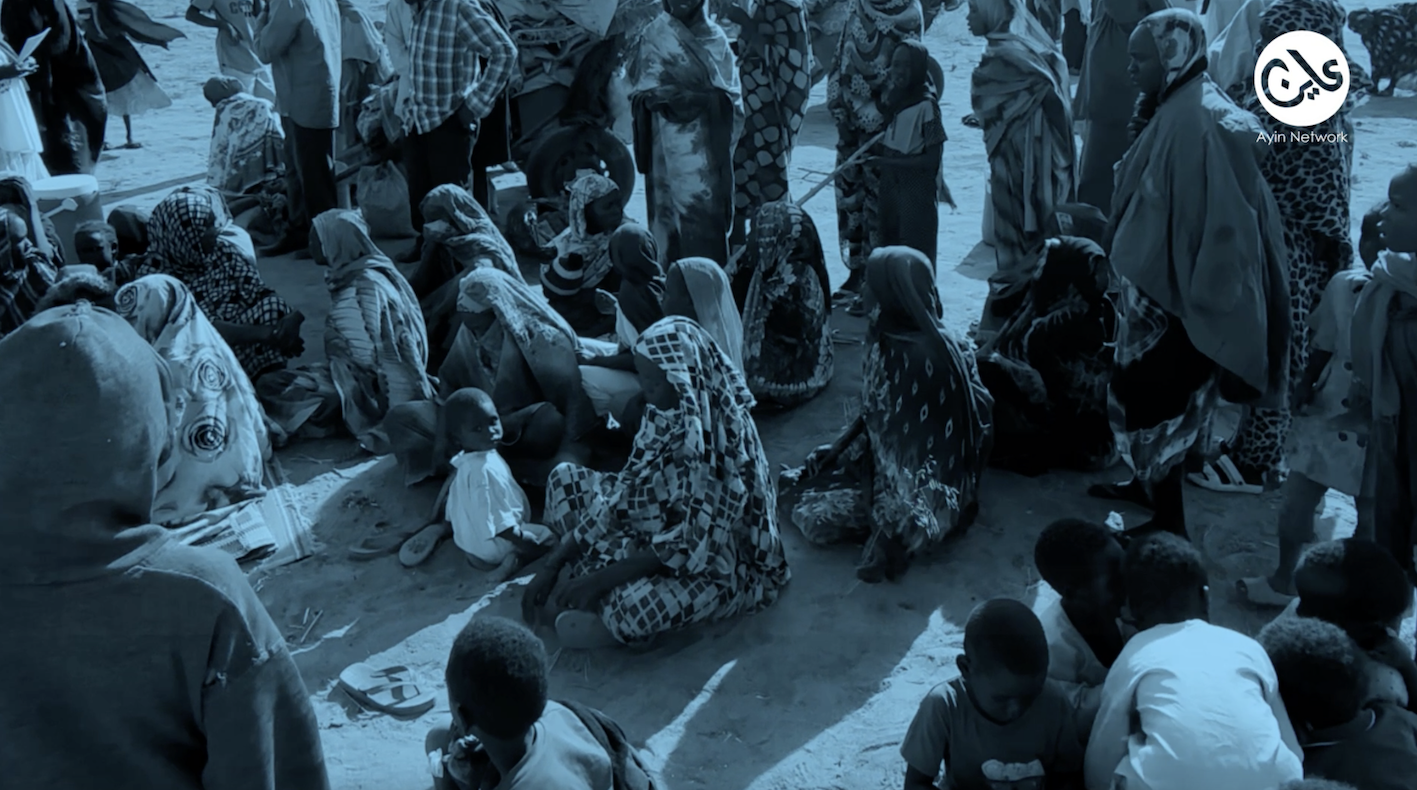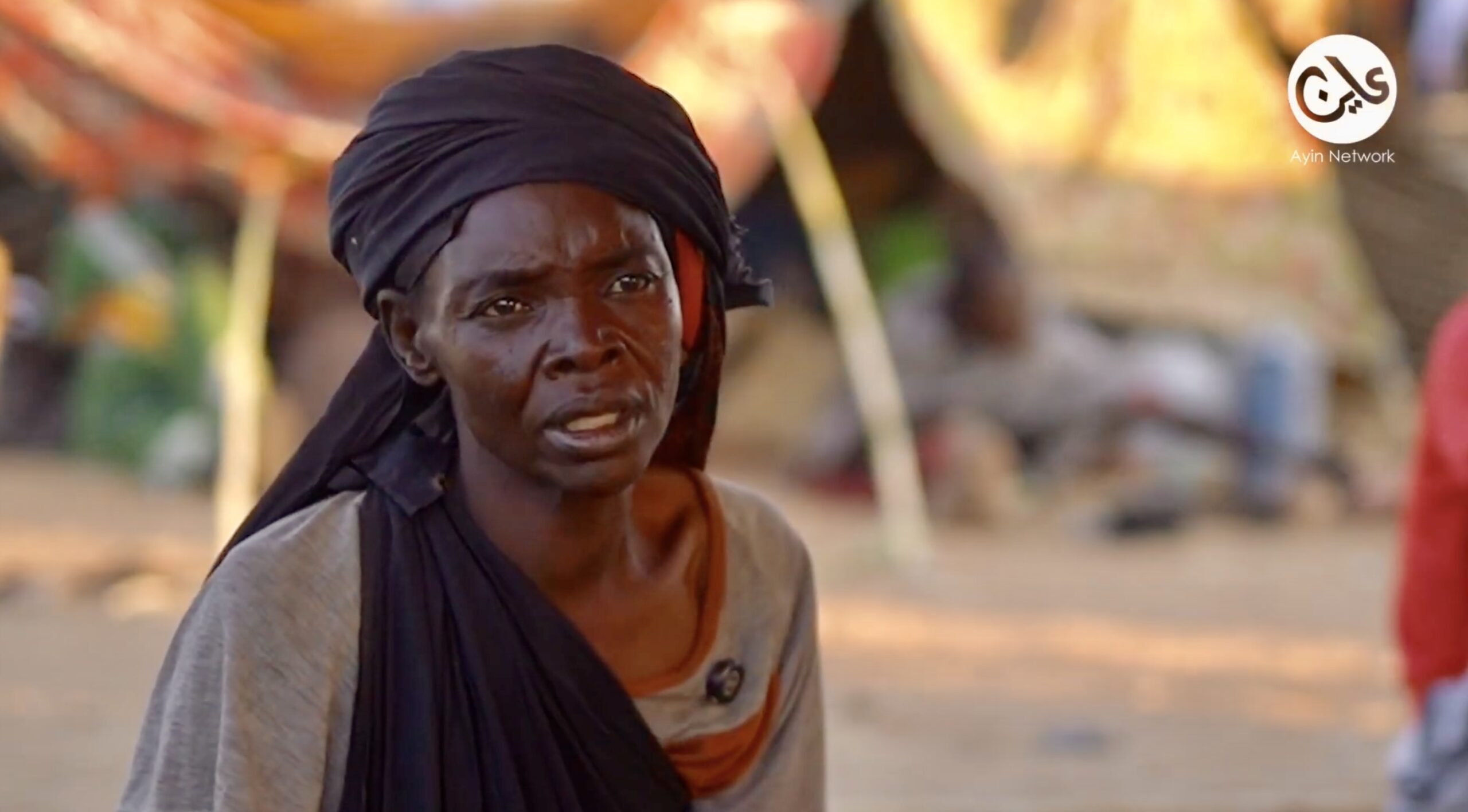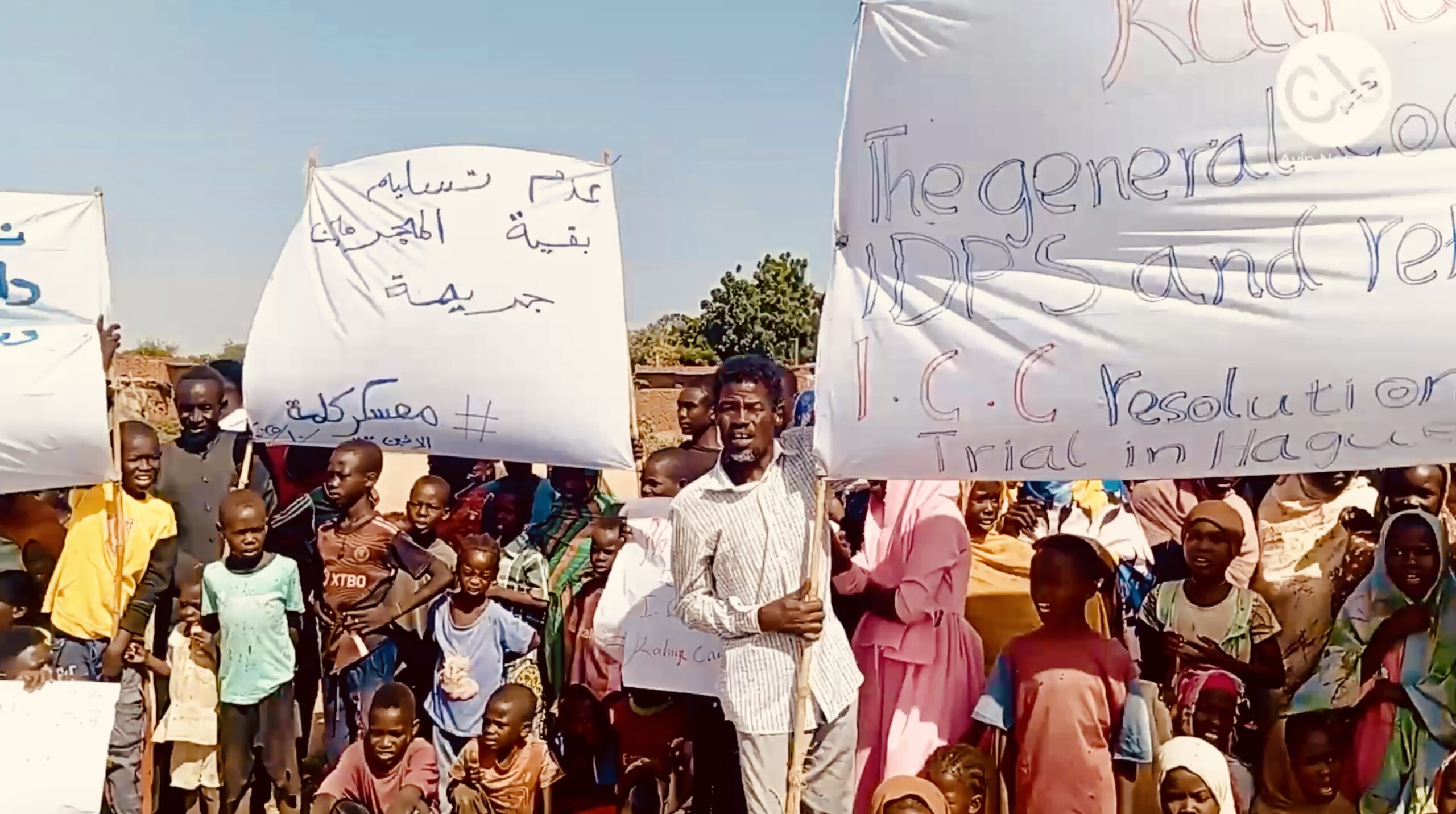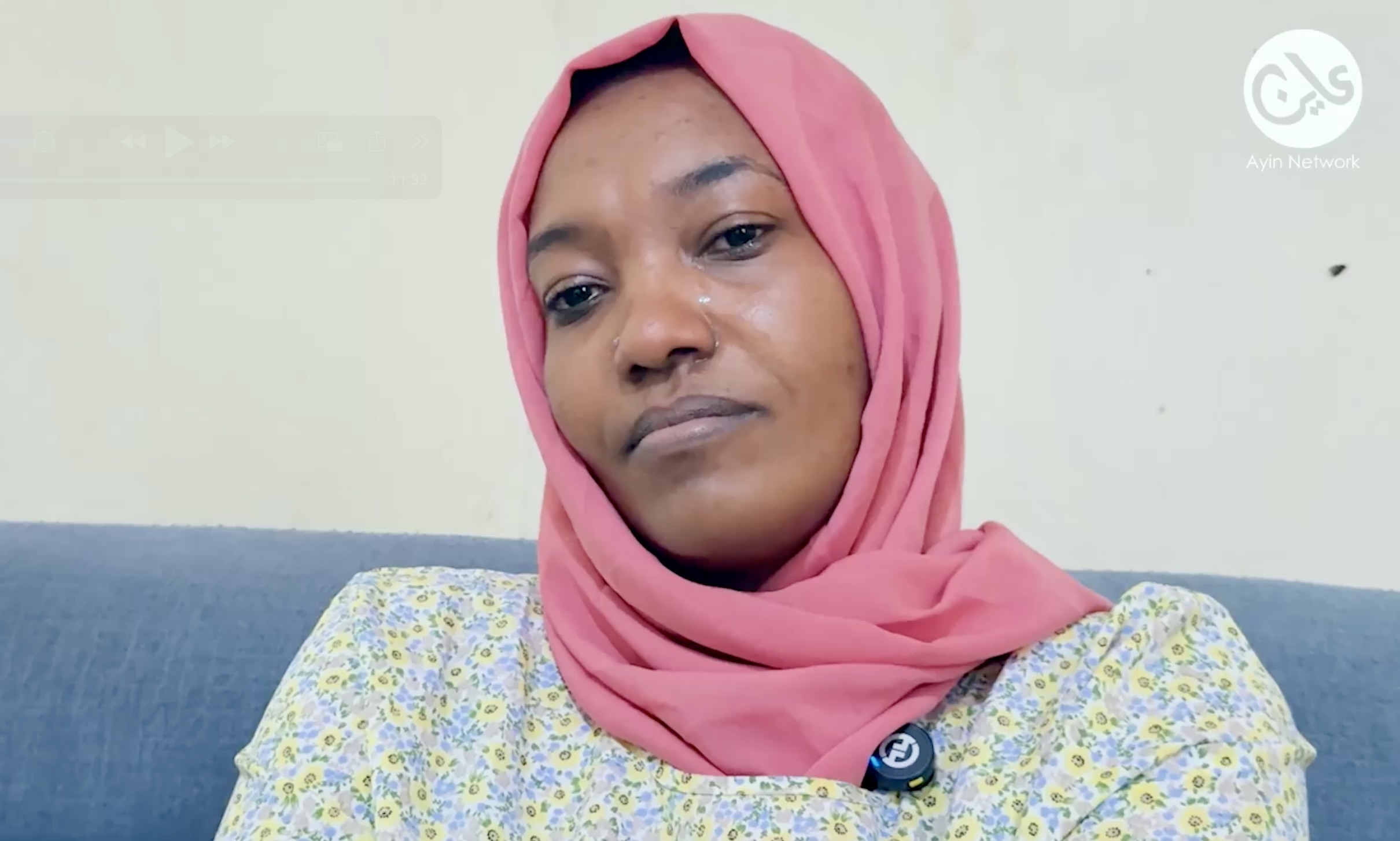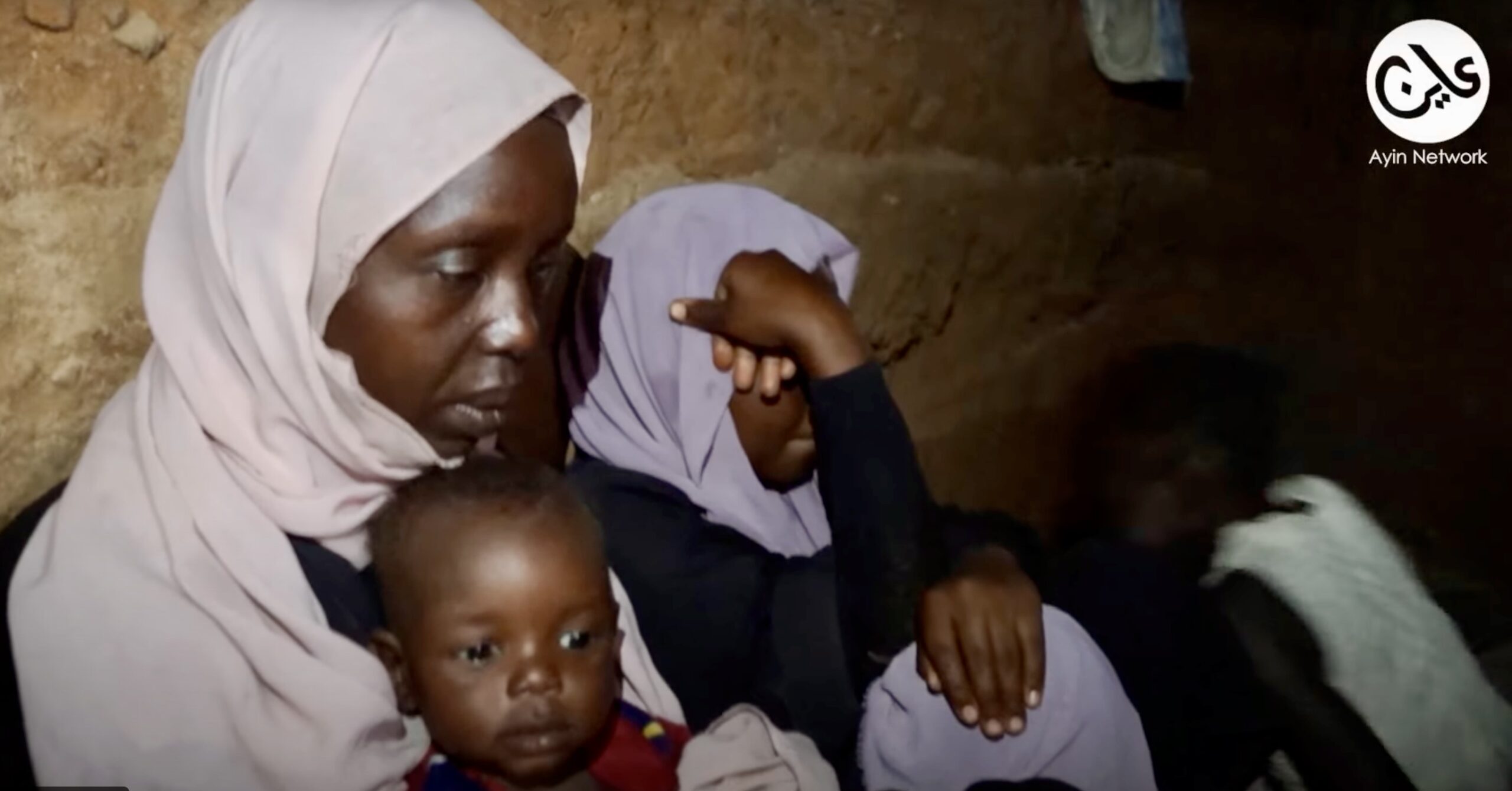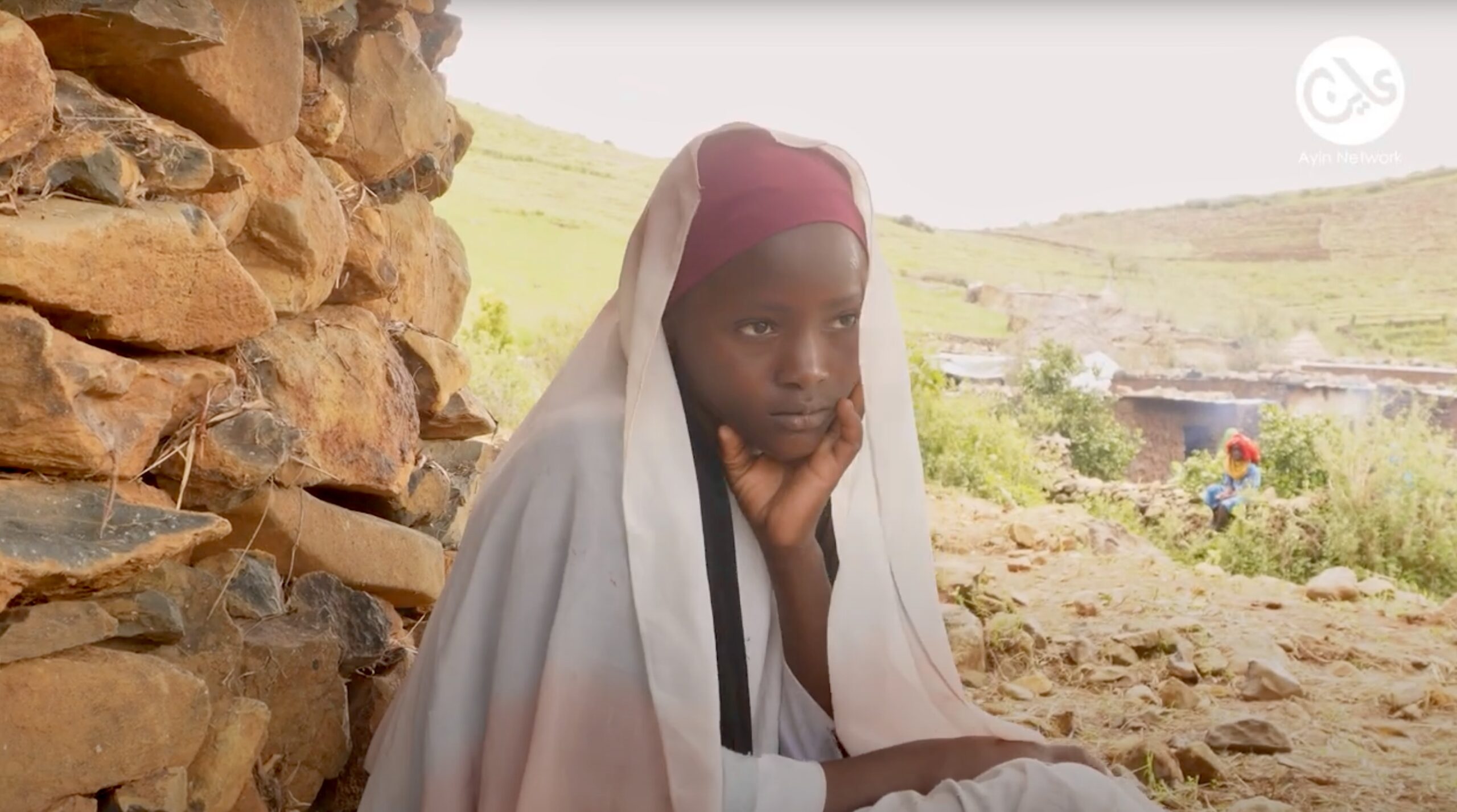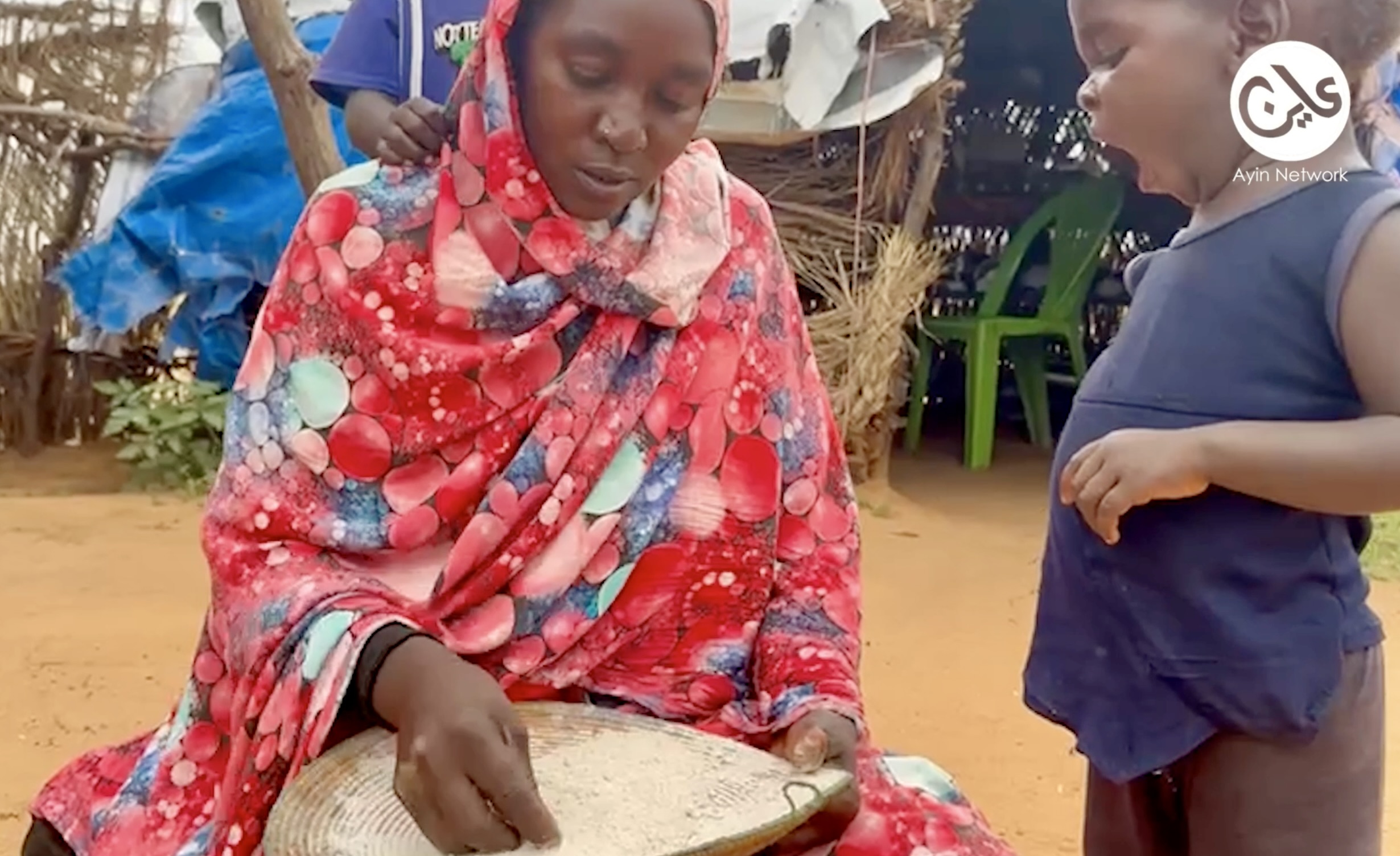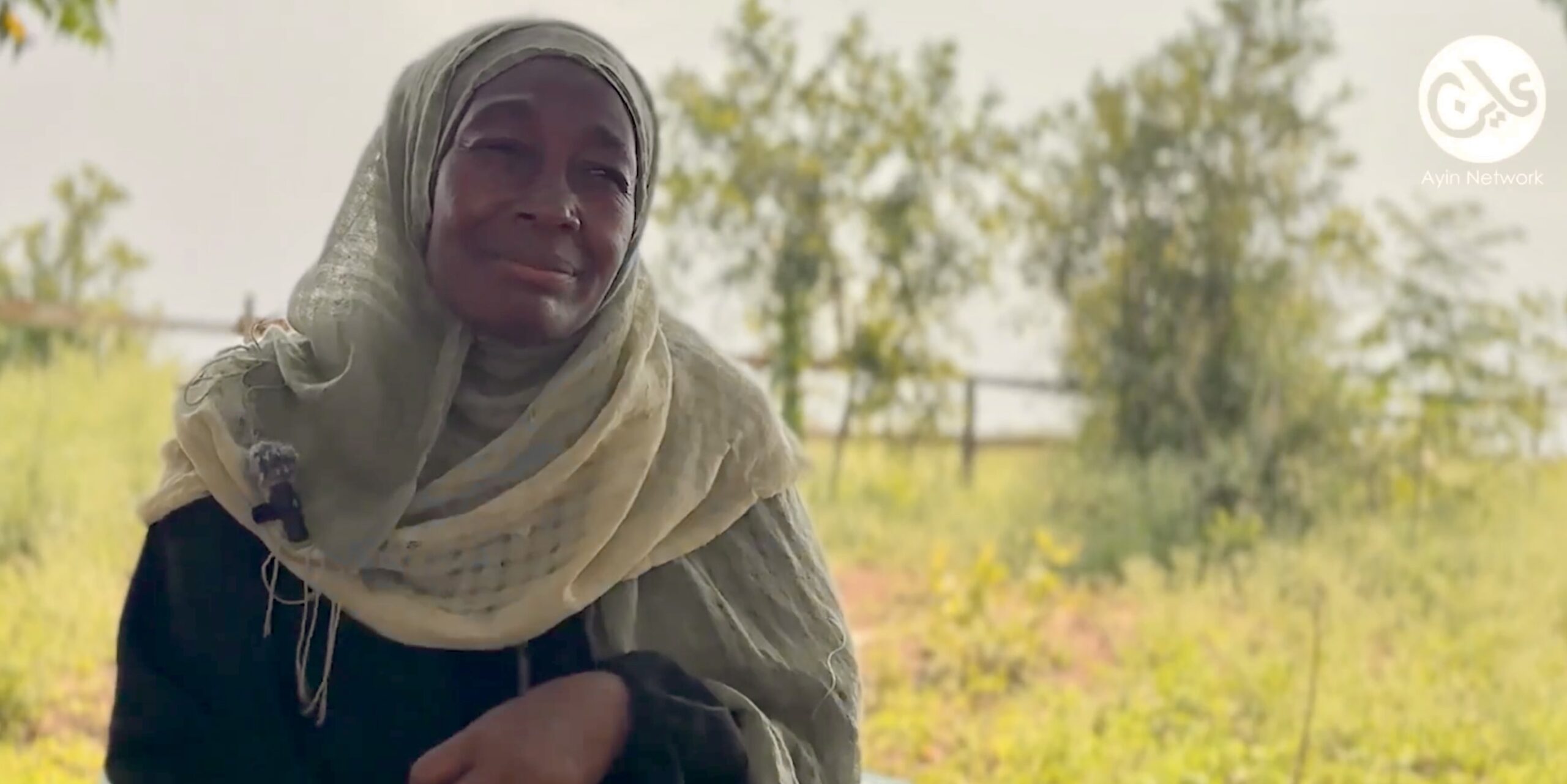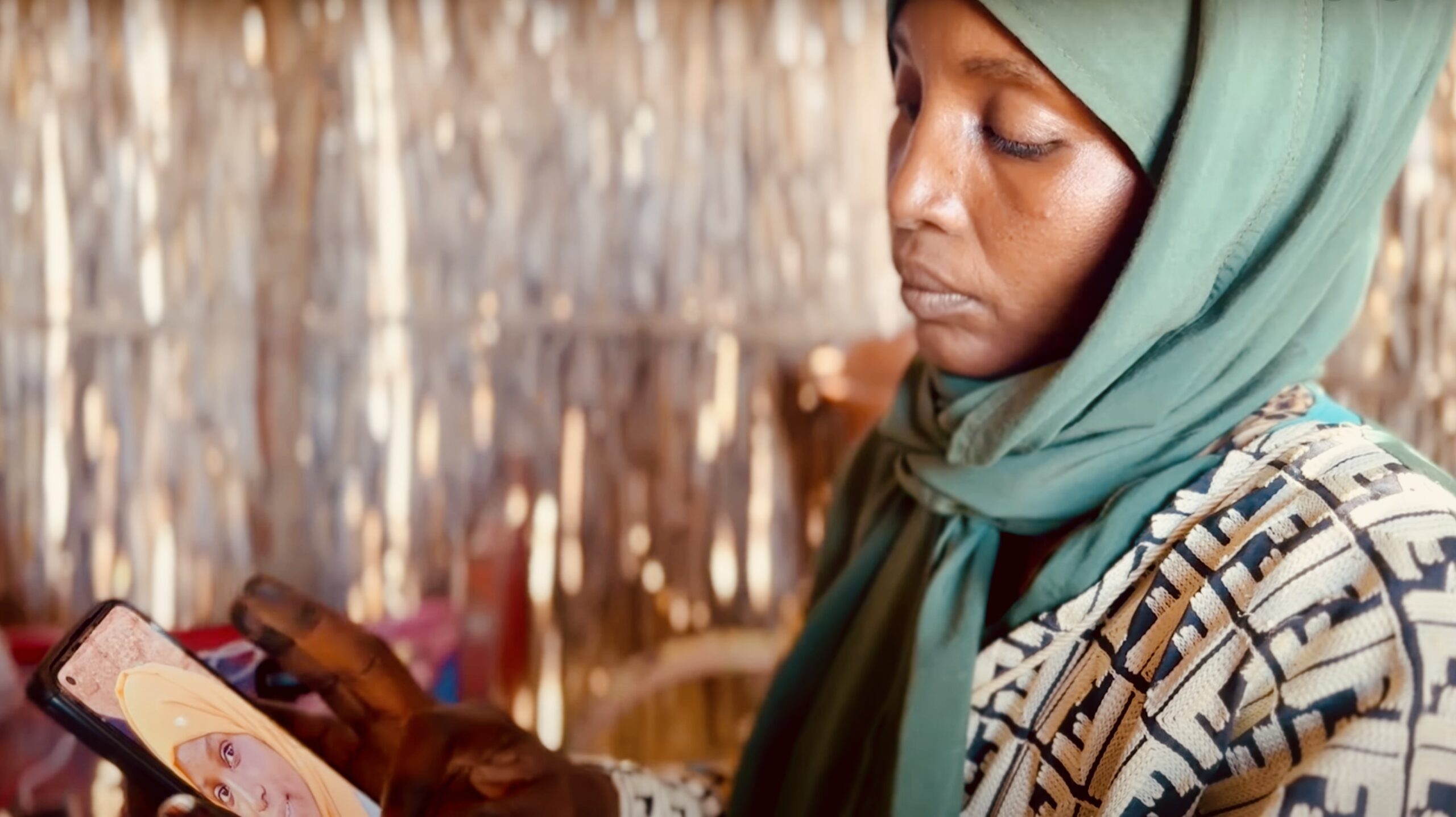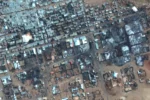El Fasher: RSF relentless raids put displaced civilians in even more peril
21 February 2025
As the paramilitary Rapid Support Forces lose ground in other areas of the country, they have intensified attacks on El Fasher, North Darfur State, targeting famine-stricken displacement camps in particular. The current targeting could lead, aid workers told Ayin, to tens of thousands of deaths.
While the Rapid support Forces (RSF) use indiscriminate artillery shelling and drone strikes, Sudan’s army have conducted airstrikes around the city. The situation has worsened dramatically following an ultimatum issued by the RSF last month, giving the Sudan Armed Forces (SAF) and allied armed groups 48 hours to withdraw from the city.
In the last few days, footage from the largest displacement settlement, Zam Zam Camp, where nearly half a million conflict-affected stay, has shown burned homes and widespread destruction, with entire areas reduced to rubble. Other videos reveal mass displacement, as thousands of people flee the camp in search of safety.
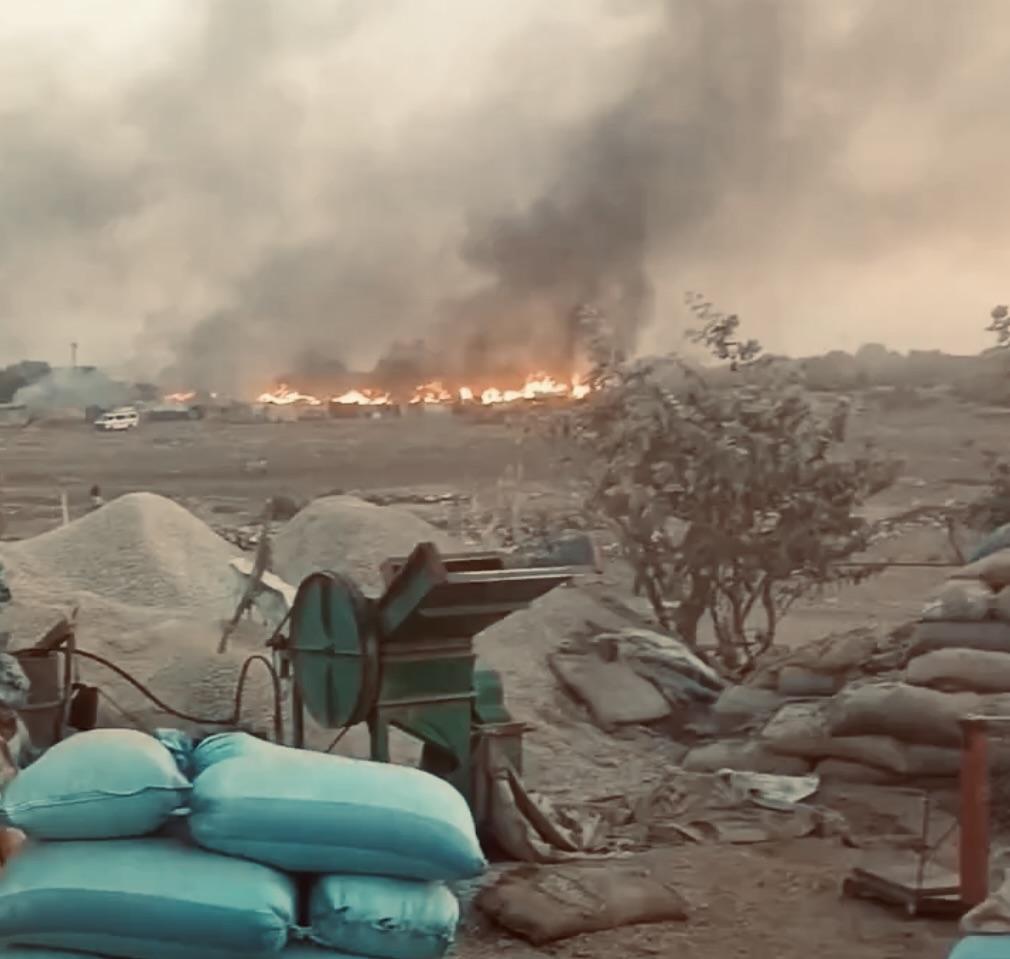
RSF raid
On 11 and 12 February, the RSF went beyond shelling Zam Zamp and physically entered the camp, looted homes, razed large areas of the main market and shot anyone who attempted to escape. Displaced from Zam Zam now residing in Tawila told Ayin they do not know if their relatives survived the onslaught as they can no longer reach them.
“Zam Zam camp is being subjected to the most heinous attack by the Rapid Support Forces,” wrote Darfur Governor Minni Minnawi and leader of a former rebel group aligned with the army. “All belongings were burned and livestock looted […] large and small animals were burned that were unable to walk after gasoline was poured on them and they were set on fire.” The perpetrators eventually left the camp a week ago after clashes with Minnawi’s Sudan Liberation Army, according to news reports.
Directly after the raid on 11 and 12 February, the Yale School of Public Health’s Humanitarian Research Lab (HRL) identified likely airstrikes and drones attacks on displaced communities just 2.5 km north of Zam Zam Camp. Satellite imagery analyzed by HRL suggests that at least three large aerial munitions struck the area, including a possible water distribution point. Thermal scarring observed on a cluster of shelters suggests drone attack,HRL reported, similar to previous tactics used by the RSF in the region. The HRL research could not, however, determine which warring party carried out the attack. The targeted community is believed to serve as a satellite settlement for those fleeing to or from Zamzam camp, with a visible increase in temporary shelters over recent weeks.
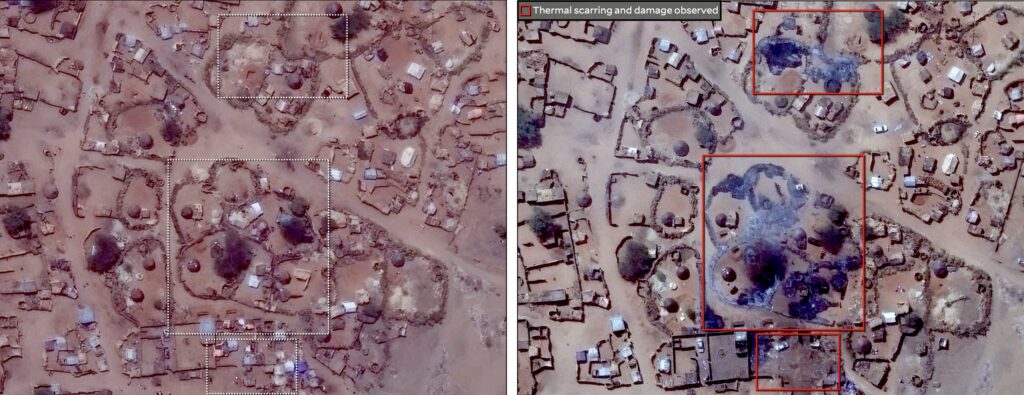
The hunger trap
The siege by the warring parties has choked off supply routes, leaving food stocks dangerously low and humanitarian aid at a standstill. According to Mathilde Vu, spokesperson for the Norwegian Refugee Council (NRC), the last food distribution in the area took place in early February, with 18,000 parcels delivered to displaced people in Zamzam and Al Salaam camps. Since then, intensified attacks have made further assistance nearly impossible. “With the destruction of the markets in a place we know for sure is hit by famine, food supplies are dwindling, and that is extremely, extremely worrying” Vu told Ayin. The closure of communal kitchens due to attacks and dwindling funding has left thousands without a vital source of food, while aid workers themselves are under threat—two have been killed in less than 10 days.
Vu warned that the situation inside El Fasher could be catastrophic, noting that some camps, such as Abu Shouk and Zamzam, were already classified as experiencing famine late last year. “The term ‘death trap’ and ‘hunger trap’ for El-Fasher, I think is sadly a reality” she said.
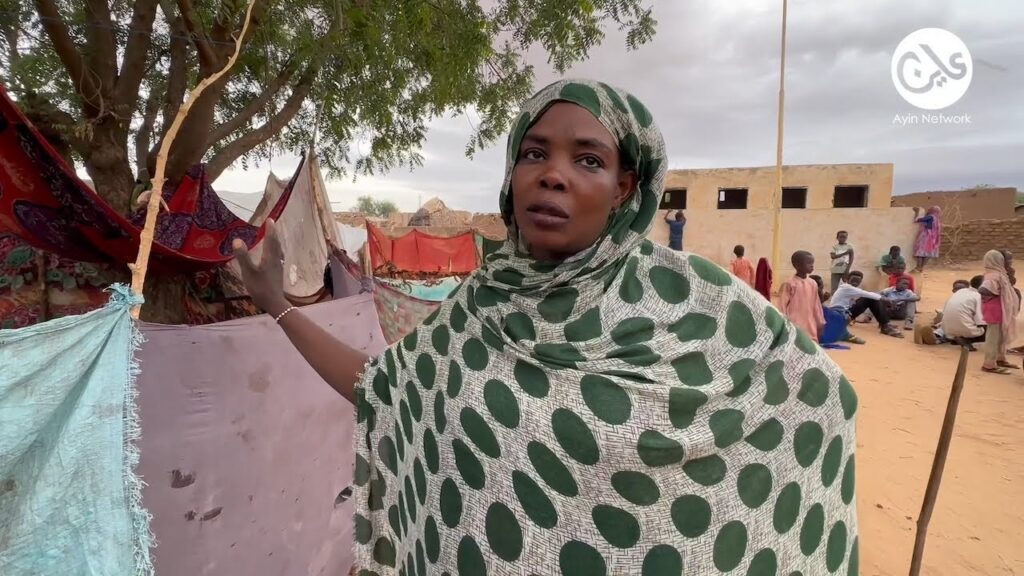
Why El-Fasher?
El-Fasher, the capital of Darfur and the last major city under SAF and JF control has been under siege since May 2024. The siege of El Fasher is a battle for Darfur’s final stronghold outside of RSF rule. An RSF capture of El Fasher would effectively cement their dominance over Darfur and enable them to consolidate power in the west before pushing towards central Sudan.The city is home to a major airport, which if seized, would provide the RSF with critical supply route for weapons, fighters, and resources.
Beyond its military significance, the RSF are intent on seizing the land for themselves. According to political analyst Hamid Khalafallah, the RSF want to clear the area of the Zaghawa community, an ethnic group associated with the “Joint Forces” –armed groups aligned to the army. “Obviously, having full control of the Darfur region is a strategic priority for them, but there’s more to that, the targeting of people of El Fasher for their ethnic background is evident,” he told Ayin. “El Fasher is the base of the joint forces, and even the RSF has a longstanding rivalry with these components.”

International silence
As attacks on civilians and IDPs in El Fasher continue unabated, the international community remains largely silent, says Nathaniel Raymond, executive director of the HRL at Yale’s School of Public health. Raymond blames the US and its allies for their reluctance to hold the United Arab Emirates (UAE) accountable for its reported support of the RSF. “Despite the passage of the United Nations Security Council resolution last summer, which calls for an immediate ceasefire in El Fasher and the surrounding area, nothing significant has been done by the international community to enforce it,” Raymond told Ayin. “That enforcement failure is directly caused by the US and its allies not wanting to hold the UAE accountable for its backing of the RSF.”




